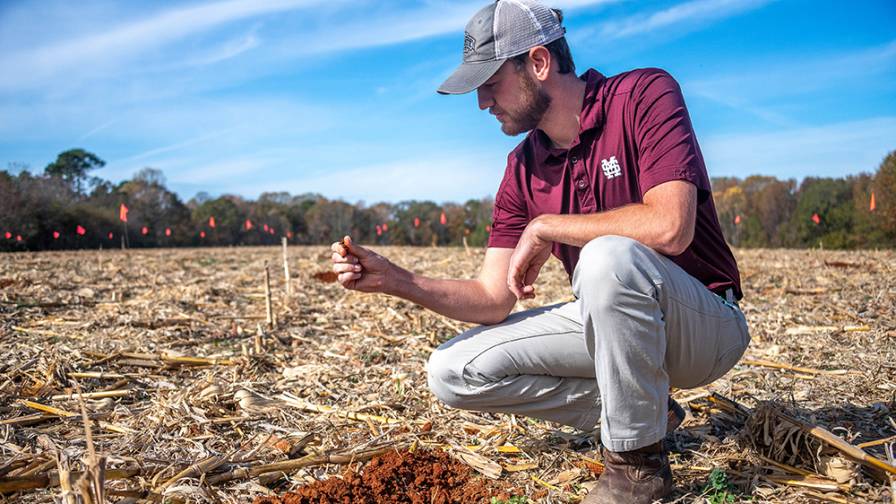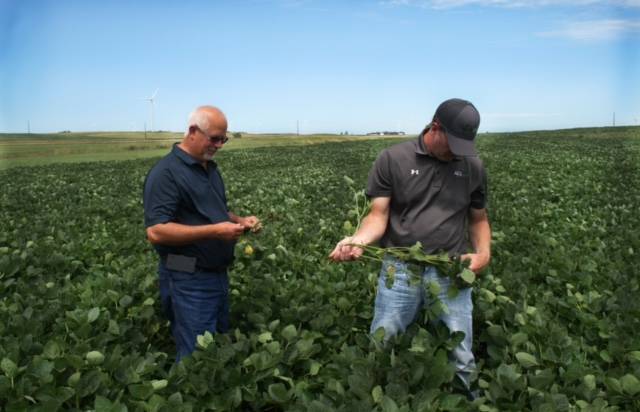A Look at Potash Origin and Sources
Potassium (K) in agriculture is often loosely referred to as potash. The term potash comes from an early production technique where K was leached from wood ashes and concentrated by evaporating the leachate in large iron pots, according to Mike Stewart, Director, International Plant Nutrition Institute (IPNI) North American Program. This method depended on tree roots to mine K from soils, which was then recovered after wood was harvested and burned. The K collected was in the form of potassium carbonate, which was used as fertilizer and in the manufacture of various products including glass and soap. Interestingly, the first patent granted in the USA (1790) was for potash production. Potash collection in this era was usually a secondary endeavor, with land clearing for farming being the primary goal of tree removal. Needless to say, this means of potash production was not sustainable.
Today, K is produced in many parts of the world, with underground salt deposits — mostly a combination of K and sodium (Na) chloride — being the main source. These deposits were formed as ancient oceans evaporated, leaving behind concentrated salt layers that were subsequently buried by sediment. Many countries contain such deposits, with the largest being in western Canada. Extraction of K salts from these deposits is mostly accomplished by conventional shaft mining techniques; however, solution mining may be used in circumstances where shaft mining is prohibitive. Also, some naturally occurring surface-water brines (e.g., Great Salt Lake in Utah, Dead Sea bordering Jordan and Israel) contain sufficient K salts to make extraction feasible. With these surface brines solar evaporation is used to concentrate the salts before harvesting. All total, over 90% of modern global potash production goes into the manufacture of fertilizer.
Although there are many K fertilizer sources available, by far the most common is muriate of potash or potassium chloride (MOP; KCl). Other sources of K include potassium sulfate or sulfate of potash (SOP; K2SO4), potassium magnesium sulfate (K2SO4 · 2MgSO4), potassium nitrate (KNO3), potassium thiosulfate (KTS; K2S2O3), and less common sources such as potassium phosphate (KH2PO4), potassium carbonate (K2CO3), and potassium hydroxide (KOH). With the exception of the last two, all of these K sources contain other mineral nutrients essential for plant growth [chloride (Cl-), sulfur (S), magnesium (Mg), nitrogen (N), and phosphorus (P)].
Once the need for K fertilizer has been established, price and availability are usually the factors governing which source is the most desirable. Since KCl is the most abundant, it is almost always the most accessible and cheapest per unit of K. There are however circumstances where simple price and availability are overridden by other concerns. These circumstances may include:
• Crop sensitivity to Cl- – Some crops are less tolerant of Cl- than others. Examples of sensitive crops are avocado, lettuce, peach, and tobacco. With the exception of certain soybean varieties, Cl- sensitivity among common row crops and small grains is usually not an issue.
• Salt index – The salt index of a fertilizer is simply a measure of salt injury potential, and is mainly a concern when fertilizer is applied to sensitive and/or high value crops. It may also be a concern in saline soils or where saline irrigation water is used. More detail on salt index is available in most basic agronomy texts.
• The need for other nutrients – For example, if the need for Mg has been established then potassium magnesium sulfate may be the best choice.
Potash production has come a long way… from wood ash leaching during the early days, to modern larges-cale mining operations that extract naturally occurring K bearing minerals. Potassium fertilizer is more than ever critical to the production of sufficient and high quality crops to accommodate an expanding global population.
For more information on specific fertilizer materials see IPNI’s Nutrient Source Specifics series at www.ipni.net/specifics-en.






